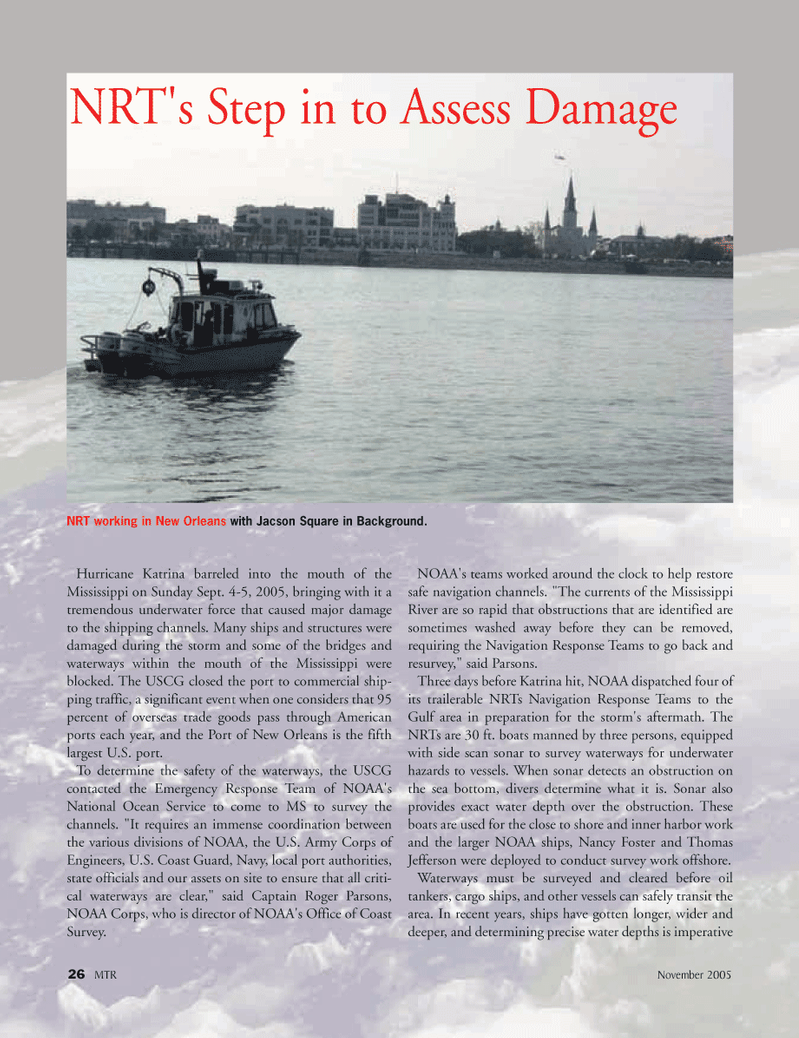
Page 26: of Marine Technology Magazine (November 2005)
Seafloor Engineering
Read this page in Pdf, Flash or Html5 edition of November 2005 Marine Technology Magazine
26 MTR November 2005
Hurricane Katrina barreled into the mouth of the
Mississippi on Sunday Sept. 4-5, 2005, bringing with it a tremendous underwater force that caused major damage to the shipping channels. Many ships and structures were damaged during the storm and some of the bridges and waterways within the mouth of the Mississippi were blocked. The USCG closed the port to commercial ship- ping traffic, a significant event when one considers that 95 percent of overseas trade goods pass through American ports each year, and the Port of New Orleans is the fifth largest U.S. port.
To determine the safety of the waterways, the USCG contacted the Emergency Response Team of NOAA's
National Ocean Service to come to MS to survey the channels. "It requires an immense coordination between the various divisions of NOAA, the U.S. Army Corps of
Engineers, U.S. Coast Guard, Navy, local port authorities, state officials and our assets on site to ensure that all criti- cal waterways are clear," said Captain Roger Parsons,
NOAA Corps, who is director of NOAA's Office of Coast
Survey.
NOAA's teams worked around the clock to help restore safe navigation channels. "The currents of the Mississippi
River are so rapid that obstructions that are identified are sometimes washed away before they can be removed, requiring the Navigation Response Teams to go back and resurvey," said Parsons.
Three days before Katrina hit, NOAA dispatched four of its trailerable NRTs Navigation Response Teams to the
Gulf area in preparation for the storm's aftermath. The
NRTs are 30 ft. boats manned by three persons, equipped with side scan sonar to survey waterways for underwater hazards to vessels. When sonar detects an obstruction on the sea bottom, divers determine what it is. Sonar also provides exact water depth over the obstruction. These boats are used for the close to shore and inner harbor work and the larger NOAA ships, Nancy Foster and Thomas
Jefferson were deployed to conduct survey work offshore.
Waterways must be surveyed and cleared before oil tankers, cargo ships, and other vessels can safely transit the area. In recent years, ships have gotten longer, wider and deeper, and determining precise water depths is imperative
NRT's Step in to Assess Damage
NRT working in New Orleans with Jacson Square in Background.
MTR#3 (17-32).qxd 11/14/2005 1:00 PM Page 26

 25
25

 27
27
